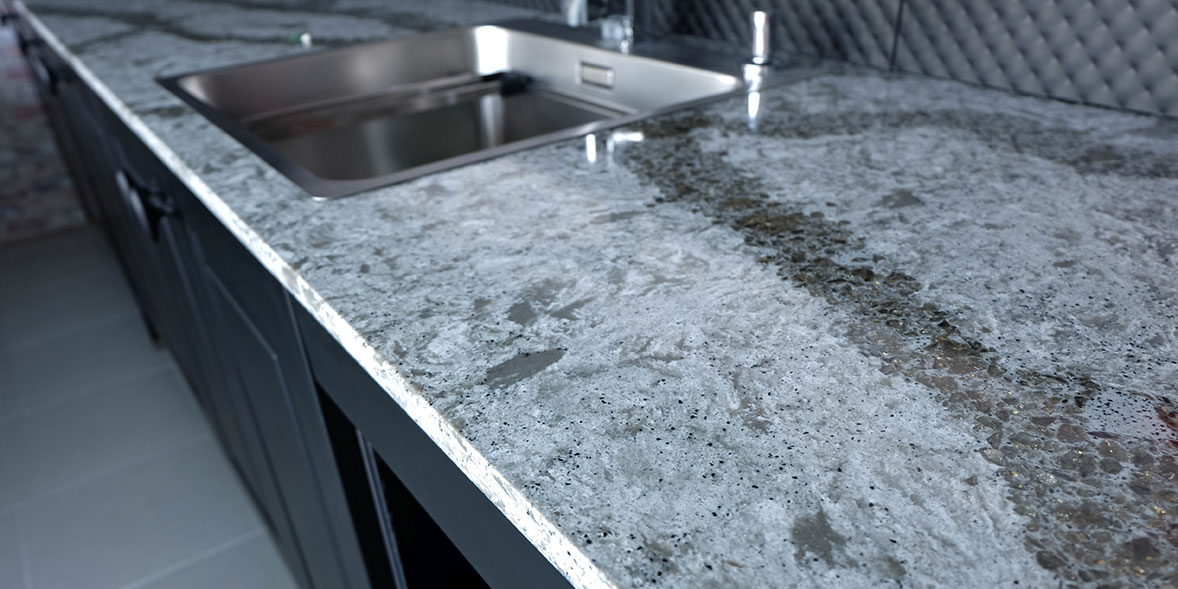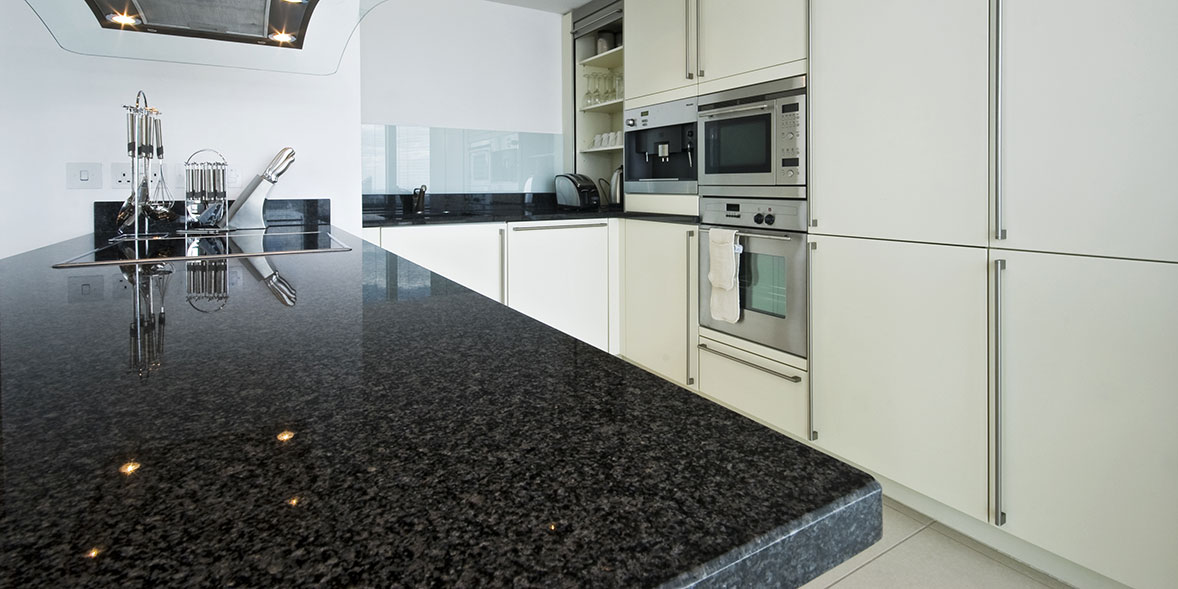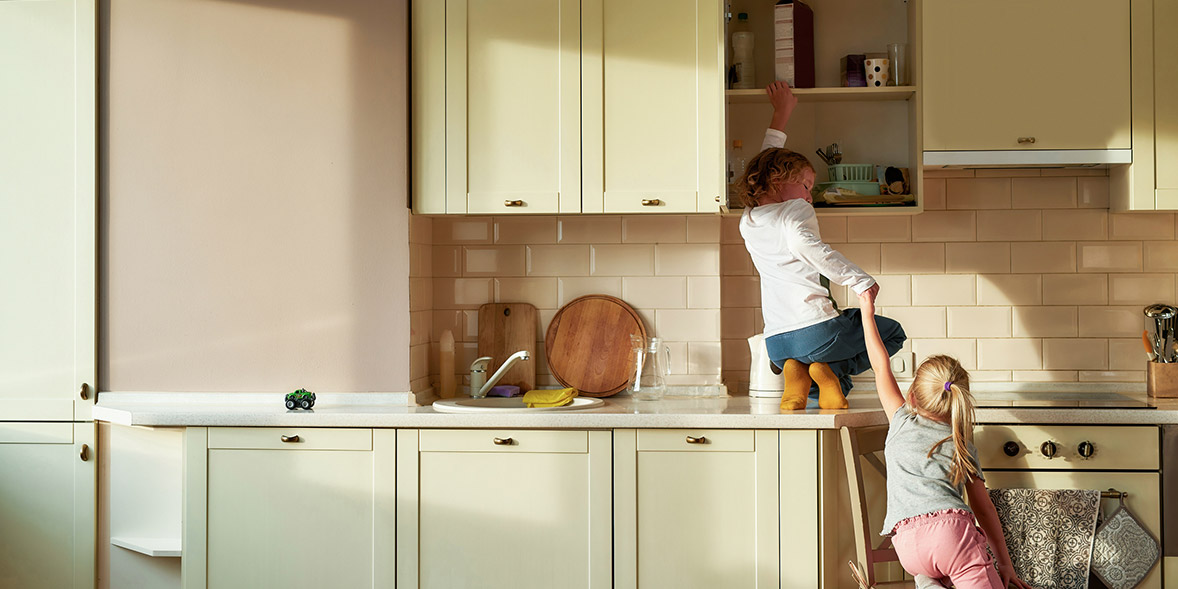How to choose the best kitchen worktops and cabinets

The quality and functionality of your kitchen units will make a huge difference to their longevity.
From granite and laminate worktops to chipboard and solid wood cabinets, we guide you through everything you need to know in terms of materials, durability and prices.
Read our guide to the best kitchen brands to find out how the likes of Howdens and Ikea performed in our assessments
Types of kitchen worktops
The type of kitchen worktop you choose can make a big difference to the overall look, feel and longevity of your space.
| Worktop material | Cost | Durability | Maintenance |
|---|---|---|---|
| Granite | High | Very high – highly scratch and heat resistant | Moderate – requires occasional resealing |
| Laminate | Low | Low | Moderate – should not be exposed to high humidity or moisture |
| Marble | Very high | Moderate | Moderate – requires resealing |
| Wood | Low to moderate | Moderate | High – requires regular sanding and resealing |
| Quartz | High | Very high – but not as heat resistant as granite | Very low |
| Solid surface | Moderate to high | Moderate | Low |
Below we explore these features in more depth.
Granite kitchen worktops

Granite worktops come in a range of colours including black, cream and pink.
It's a non-renewable natural stone, so it requires a significant amount of energy and generates a lot of pollutants during extraction and transportation, which makes it quite expensive.
It also needs to be installed by a professional, as it requires specialist tools.
Granite worktops are very hard-wearing. It's difficult to scratch or stain granite, and you can even place hot pans on its surface without leaving a mark.
It's also relatively easy to maintain, and only needs to be resealed roughly once a year.
Laminate kitchen worktops

Laminate worktops are made from MDF or chipboard wrapped in a laminate surface (a type of plastic).
They're cheaper than other options and easy to maintain, but they're not as durable as other options because the plastic wrap is much softer than stone.
They are prone to scratching, and you can't place hot pans on the surface. In addition, the plastic wrap can peel and lift away from the MDF underneath if exposed to humidity or moisture. Plus, the joints are vulnerable to water ingress, so be mindful of spills if you have a joint near the sink.
You don't need to do anything to maintain your laminate worktop, but it's best to wipe up spills as soon as they occur.
Marble kitchen worktops

Marble is a beautiful but expensive kitchen worktop option. Supplies are finite and extracting marble and converting it into slabs is an energy-intensive process – both factors that drive up the cost.
But in this case, spending more doesn't get you a more durable product. Marble is softer and more porous than other types of stone, so it’s prone to scratches, dents and staining. Plus, you can't place hot pans onto the worktop, as this could leave a burn mark, or even cause the stone to crack.
You can polish out any scratches, but this can be expensive. You'll also need to reseal your worktop roughly every six months.
Wooden kitchen worktops

Typical choices for a wood kitchen worktop include maple, oak and cherry. Wood is relatively inexpensive to cultivate and install, making it a fairly low-cost option.
The main downside of wood is that, compared to stone, it's very soft and requires a lot of upkeep.
It's prone to scratching and denting, and sensitive to heat and water. However, you can sand away any imperfections on its surface. You'll also need to regularly oil and seal your worktop – roughly every three to six months.
If you have an appetite for maintenance, wood can be a beautiful, sustainable and welcoming addition to your kitchen.
Quartz kitchen worktops

Engineered quartz – a combination of quartz crystals, resins and pigments – makes for a highly durable kitchen worktop, although it’s not as tough as granite.
It can be made to resemble other stone worktops, so if you want a granite or marble look for less, quartz is a good option.
It's resistant to scratches, and because it's non-porous, it's very resistant to stains and doesn't need to be sealed, so maintenance is minimal.
However, it isn't as heat resistant as granite, so you can't place hot pans on its surface.
Quartz contains a relatively high percentage of silica, which is dangerous when inhaled. However, there is no known risk posed to those who own quartz worktops.
There is a risk to those involved in manufacturing quartz if safety procedures are not followed, as they are at risk of inhaling silica. The risk to those who install the worktops is very small, so long as safety procedures are followed.
Ensure that you buy your quartz from a reputable company with proper health and safety procedures in place. You can also opt for quartz with a lower percentage of silica if you're concerned.
Solid surface kitchen worktops

Solid surface worktops – such as Corian, Hi-Macs and Staron – are fully synthetic, which makes them relatively cheap compared to natural stones.
They're made of a blend of resins, minerals and pigments, so they're available in a huge range of colours and patterns.
Solid surface worktops are also moderately durable. While they can be scratched or dented, and they're not heat resistant, any damage can be easily sanded and repaired.
Like quartz, they are also non-porous, meaning they're not prone to staining and don't need to be resealed.
How to choose best kitchen worktops for your home
When choosing the best kitchen worktop for your space, consider how much it will get used, the amount of maintenance you're willing to do, and your budget.
Prices per square metre of worktop can range from £30 up to £300, depending on the material.
Most worktops are 20-40mm thick (most commonly 28mm or 38mm), and 600mm or 900mm wide. You can also get bespoke worktops made to your specifications.
Frequently asked questions:
- What’s the cheapest kitchen worktop? Laminate is the cheapest kitchen worktop, followed by wooden worktops and some forms of solid surface, such as Staron. Marble and granite are the most expensive.
- What’s the most stain-resistant kitchen worktop? Quartz and solid surface worktops are most stain resistant. They're non-porous, meaning they won't absorb any liquids.
- What’s the easiest worktop to clean and maintain? Quartz is the easiest worktop to maintain – it's highly durable and doesn't need to be sealed.
- What’s the most durable worktop? Granite is the most durable worktop – it's a very hard stone, so it's resistant to heat, scratching and denting.
How can I update my kitchen worktops without replacing them?
There are several ways you can refresh your kitchen worktops without replacing them.
It's possible to wrap your worktops in contact paper or vinyl, or paint or tile the worktop. You could try DIYing these jobs – the key to a lasting result is usually in the preparation, so ensure your worktops are fully clean and use a good quality primer or waterproof grout when tiling. But unless you're a competent DIYer, you'll likely get the best results by enlisting a professional.
You could also invest in a quartz or granite overlay that's cut-to-fit to slip over your existing worktop. It's cheaper and less disruptive than a full replacement, but like most things, durability will depend on the material you select and the quality of the installation.
Visit our kitchen costs guide for the average prices of granite, plastic laminate and solid oak worktops
Types of kitchen cabinets

From traditional Shaker-style kitchen cabinets to more modern flat-panel cabinets, there are plenty of kitchen cabinet designs to choose from. Open shelving and glass-fronted cabinets allow you to display your favourite crockery.
Shaker cabinets
- Shaker cabinets are characterised by a flat-panelled door with a recessed centre panel.
- They work well in traditional and contemporary kitchens.
Flat-panel/slab cabinets
- Flat panel/slab cabinet doors are completely smooth.
- They're good for creating a modern and minimalist look.
- They're marginally easier to clean than a more decorative design.
Inset cabinets
- Inset kitchen cabinet doors fit flush with the cabinet frame. When the door is closed, it doesn't protrude from the cabinet.
- They look sleek and modern, and work particularly well in contemporary kitchens.
- They require a high degree of precision to install.
Open shelving
- Open shelving adds a modern and airy feel to the kitchen, and can work well in galley kitchens where too many cabinets can make the space feel smaller.
- They can look cluttered though, and you might find you need to dust your crockery regularly.
Glass-fronted cabinets
- Similar to open shelving, glass-fronted cabinets allow you to display your crockery and glassware and add an airy feel to the kitchen.
- However, glass fittings tend to show dust and fingerprints more readily than solid cabinets.
How to choose your kitchen cabinets
High-quality cabinets will stand up to everyday use. There are several indicators of cabinet quality to consider when choosing your kitchen cabinets.
Kitchen cabinet material
Laminate-covered chipboard or MDF (medium-density fibreboard) is the most popular material for kitchen cabinets. You can choose from plain matt or gloss laminate finishes, or those that replicate other materials, such as wood.
Chipboard carcasses are the cheapest units, and many of the kitchens from big-name brands are made partly of chipboard.
MDF is higher density and therefore stronger than chipboard. It tends to be more water resistant, so units that use it are likely to be slightly more expensive than chipboard.
Solid wood kitchen units are more expensive than chipboard or MDF cabinets. Most solid wood units arrive pre-assembled (and glued together), making them strong, rigid and highly durable.
Cabinet thickness
A typical kitchen cabinet is between 15-19mm thick, with most being around 18mm.
Thicker cabinets will both feel more luxurious and are more durable. However, they're also more expensive.
Type of cabinet joints
The quality and sturdiness of your cabinets will also depend on the types of joints used. Generally speaking, there are three types:
- Wooden dowels glued into holes
- Wooden dowels secured in holes with two or three screws
- Wooden dowels secured in holes with two sets of metal studs and cams (cams are discs that, once inserted and turned 90 degrees, secure the dowel in place).
The latter option is the strongest. Factory-assembled options will typically use studs and cams to secure their units.
For expert money-saving tips, read our guide on how to renovate your kitchen on a budget
Which? kitchen cabinet tests

In February and March 2025, we asked 4,580 Which? members and members of the general public who've bought a new kitchen in the past 10 years to tell us about their experience – from the level of customer service they received to how well the kitchen has lasted.
We also assessed kitchen units from the big-name brands in our lab using 19 expert tests.
Which? members can log in to find out which types of kitchen cabinets fared best in our lab tests, and how thick kitchen cabinets should be.
If you're not a Which? member, join Which? to access our kitchens reviews.
To see the full results of our testing, see our guide to the best kitchen brands.
To find out more about popular kitchen brands, visit our review pages:
This article uses insights from the Which? Connect panel, collected from research activities with our members. Find out how to get involved
